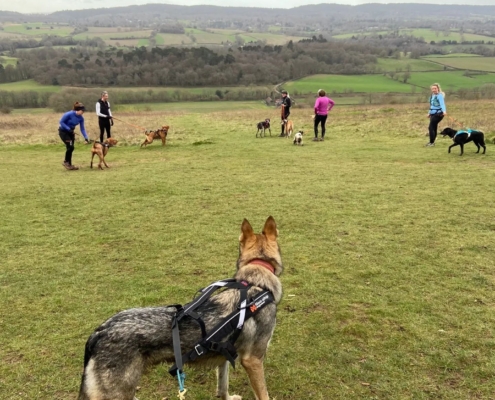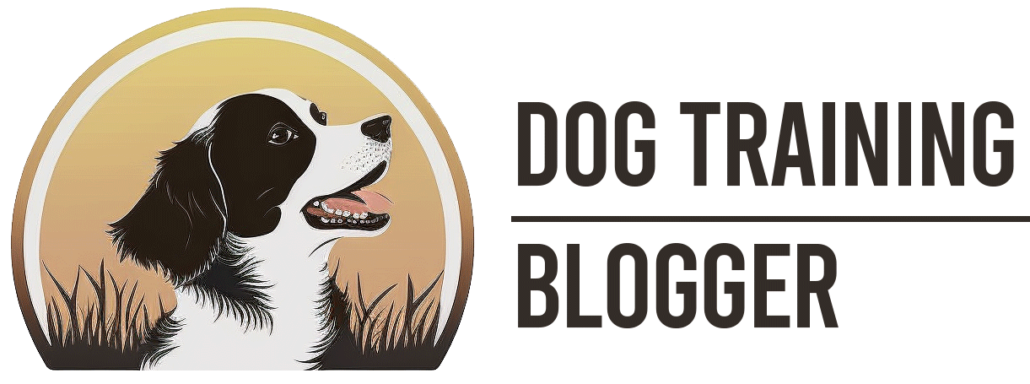What is Operant Conditioning for Dogs: An In-Depth Look
Would you like to learn more about how your dog thinks and learns to give yourself an added advantage when training your dog (or even someone else’s for that matter)?
In this blog post, together we dive into the fascinating world of operant conditioning, a fundamental principle in dog training.
By understanding operant conditioning, you’ll gain valuable insights into your dog’s behavior and learn how to train them more effectively.
Operant conditioning for dogs is a learning process that shapes a dog’s behavior by using consequences, such as rewards and punishments, to encourage desired actions and discourage unwanted ones.
| Key Takeaways |
|---|
| Operant conditioning is a learning process that shapes behavior using rewards and punishments. |
| The four quadrants of operant conditioning are positive reinforcement, negative reinforcement, positive punishment, and negative punishment. |
| Operant conditioning principles apply to various animal species, not just dogs. |
| Classical conditioning works alongside operant conditioning in dog training, focusing on creating associations between stimuli. |
| Practical examples of operant conditioning include teaching a dog to fetch, crate training, and discouraging counter surfing. |
It is key to note that operant conditioning does not just apply to dogs, but many other animals too. Also as dog trainer, we always encourage rewards and positive reinforcement over any of the negative actions. But to fully appreciate dog training to the fullest we must keep a holistic view and be aware of other options out there (although, frankly speaking high discouraged).
Plus we must also remember that classical and operant conditioning often work hand in hand. We just don’t always realise that is what we are doing as dog owners/trainers (but we will after reading this article.
Understanding Operant Conditioning: The Basics
In this section, we’ll cover the foundational concepts of operant conditioning.
We’ll define what operant conditioning is, discuss the four quadrants that make up this learning principle, and examine the role of reinforcement and punishment in shaping behavior.
By understanding these basic concepts, you’ll be better equipped to train your dog using proven methods.
Definition and explanation of operant conditioning
Operant conditioning is a learning process through which an animal’s behavior is shaped by its consequences.
In simpler terms, it means that your dog learns to repeat behaviors that are rewarded and avoid behaviors that are punished or produce negative results.
The four quadrants of operant conditioning
- Positive reinforcement
This occurs when you reward your dog for performing a desired behavior, increasing the likelihood of them repeating it in the future. For example, giving your dog a treat when they sit on command. - Negative reinforcement
This involves removing an aversive stimulus after your dog performs a desired behavior, also increasing the likelihood of that behavior occurring again. An example would be releasing the tension on a leash when your dog stops pulling. - Positive punishment
This quadrant involves adding an aversive stimulus following an undesired behavior, decreasing the likelihood of that behavior happening again. For instance, saying “no” firmly when your dog jumps on a guest. - Negative punishment
This means taking away something your dog enjoys after they perform an undesired behavior, decreasing the likelihood of that behavior being repeated. For example, removing a toy when your dog starts to chew on it inappropriately.
The role of reinforcement and punishment in shaping behavior
Reinforcement, both positive and negative, encourages your dog to repeat desired behaviors. Punishment, on the other hand, helps to discourage undesired behaviors.
By using a balanced approach that incorporates both reinforcement and punishment, you can effectively shape your dog’s behavior and teach them the difference between acceptable and unacceptable actions.

What is Operant Conditioning in Dogs? Examples!
Now that we have a basic understanding of operant conditioning, let’s dive into some practical examples.
In this section, we’ll look at how positive reinforcement, negative reinforcement, positive punishment, and negative punishment can be used to train your dog to perform specific behaviors or to stop unwanted actions.
I will personally note here again we as dog owners and professional trainers focus on positive reinforcement as much as possible.
Do not make any mistake that being “firm” with you dog by clearly stating “No” when needed with far excessive forms of “punishment”. Everything here needs to be taken “in context”.
Training a dog to sit using positive reinforcement
When teaching your dog to sit, you can use positive reinforcement by rewarding them with a treat or praise immediately after they sit on command.
This helps them associate the action of sitting with a positive outcome, making them more likely to sit when asked in the future.
Teaching a dog to stop barking with negative reinforcement
To train your dog to stop barking using negative reinforcement, you can use an interrupter like a loud clap or noise maker to startle them when they bark. Once they stop barking, the interrupter is removed, creating a relief for the dog.
Over time, your dog will learn that not barking results in the absence of the aversive stimulus.
Off topic note: For those Harry Potter fans out there. What was the effect of of the hand bells being shaken in front of the dragon in the dungeons of the Gringotts bank? Yes, that was an example of cruel operant conditioning, even spotted and mentioned in the response by Harry, Hermione and Ron.
Discouraging unwanted behaviors using positive punishment
If your dog has a habit of jumping on people, you can use positive punishment to discourage this behavior
By firmly saying “no” or “off” when they jump. This adds an aversive stimulus (your voice) immediately after the undesired behavior, making it less likely for them to jump on people in the future.
Preventing jumping on people with negative punishment
Another approach to discourage jumping is to use negative punishment. When your dog jumps on someone, the person can turn their back and ignore the dog, removing the attention the dog is seeking.
As a result, your dog learns that jumping on people leads to a loss of attention, making them less likely to jump in the future.

Operant Conditioning in Animals: Beyond Dogs
Operant conditioning isn’t limited to just dogs!
The principles of operant conditioning can be applied to other animals, such as birds, marine mammals like dolphins, and even farm animals. You’ll see that the same learning principles apply across a wide range of species, highlighting the universality of operant conditioning.
An example of operant conditioning in birds
Bird trainers often use positive reinforcement to teach birds to perform tricks or mimic sounds.
For example, a parrot may be rewarded with a treat each time it successfully imitates a word or phrase. Over time, the bird learns to associate the treat with the desired behavior, increasing the likelihood of repeating it.
Just think of those parrots you’ve seen on the bicycles riding around. Yep… operant conditioning!
The use of operant conditioning in marine mammals, such as dolphins
Marine mammal trainers often use positive reinforcement to teach dolphins to perform acrobatics or respond to specific signals.
By rewarding the dolphin with fish or attention for performing the desired behavior, trainers can effectively shape the animal’s actions. Again think of dolphins jumping through hoops or swimming backwards. Operant conditioning!
Training farm animals using operant conditioning principles
Farm animals, such as horses, can also be trained using operant conditioning.
For instance, horse trainers may use positive reinforcement, like food or praise, to encourage desired behaviors like standing still while being groomed or walking calmly on a lead.
It’s also key to remember that consistency with dog training is absolutely key. See our other article The Importance of Consistency in Dog Obedience Training for more details on this.
Classical Conditioning vs. Operant Conditioning in Dogs
Now, let’s compare operant conditioning to another important learning principle: classical conditioning.
In this section, we’ll define classical conditioning and discuss the key differences between these two learning processes. By understanding how they work together in dog training, you’ll be better equipped to develop a comprehensive training plan for your dog.
Definition and explanation of classical conditioning
Classical conditioning is a learning process where an animal learns to associate a previously neutral stimulus with a significant event or outcome.
A very famous example is Pavlov’s dogs, who learned to associate the sound of a bell with being fed, eventually salivating at the sound of the bell alone.
Differences between classical and operant conditioning
While classical conditioning focuses on creating associations between stimuli, operant conditioning focuses on the consequences of behaviors.
In classical conditioning, the animal learns to expect a specific outcome when exposed to a certain stimulus, while in operant conditioning, the animal learns that their actions can directly affect outcomes.
How classical and operant conditioning work together in dog training
In dog training, classical and operant conditioning often work hand in hand.
For example, when teaching a dog to come when called, a trainer may first use classical conditioning to create a positive association between the sound of a whistle and receiving a treat.
Once this association is established, you can use operant conditioning principles like positive reinforcement to shape the dog’s behavior, rewarding them for coming when the whistle is blown.
More Information
If this subject is really starting to click with you, there are lots books and academic studies that have been carried out on operant conditioning. There is Classical and Operant Conditioning by Ivan Pavlov& Burrhus Skinner or “The efficacy of the model–rival method when compared with operant conditioning for training domestic dogs to perform a retrieval–selection task“

Three More Examples of Operant Conditioning
To further cement your understanding of operant conditioning, we’ll go through three more examples We’ll explore how to teach a dog to fetch, crate train using negative reinforcement, and discourage counter surfing using positive punishment.
These practical examples will help you see operant conditioning in action and inspire you to apply these principles to your own dog training efforts. And yes we have dedicated articles for all of these topics that expand on them further and give them the full detail they need.
Teaching a dog to fetch using operant conditioning
When training your dog to fetch, start by using positive reinforcement to reward them for picking up a toy. Next, gradually increase the distance between you and the toy, continuing to reward them for successfully retrieving it.
Eventually, you can add a verbal cue, such as “fetch,” and continue using positive reinforcement to solidify the behavior.
Crate training with negative reinforcement
Crate training can be made easier by using negative reinforcement.
When your dog enters the crate voluntarily, reward them by removing an aversive stimulus, such as loud noises or distractions in the room. Over time, your dog will learn that being in the crate results in a more peaceful and calm environment.
Discouraging counter surfing with positive punishment
If your dog has a habit of jumping onto counters to steal food, you can use positive punishment to deter this behavior.
One option is to place a noise-making device, like an empty soda can with coins inside, on the edge of the counter. When your dog jumps up, the can will fall, creating a loud noise that startles and discourages them from attempting to counter surf again.
And Finally…
Congrats! You’ have now gained a deeper understanding of operant conditioning for dogs. It wasn’t anything scary or anything complicated either I hope.
By recognizing the importance of this learning principle and applying it in your training sessions, you’ll be well on your way to developing a stronger bond with your four-legged friend and helping them become a well-behaved, well-adjusted member of your family.
Try and put these principles into practice, and enjoy the journey of training your dog with the power of operant conditioning! Somehting you may have already been using all along and not even know that this is what it was called.
Happy training.
Brain Training For Your Dog



